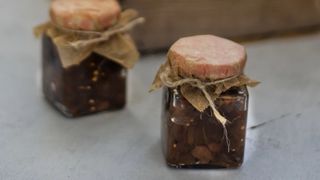If you enjoy this article, or any other content from this website, please subscribe to the newsletter. Your support can make a big difference!
When someone brings out a scrumptious cheese board with a dollop of 'chutney', my mind always turns to Christmas scenes, lavish banquets and the Republic of India. More on that in a bit.
What makes chutney a chutney?
The chutneys a lot of us Westerners are familiar with, are typically made from fruit that is slow-cooked in spices and natural preservatives like sugar and vinegar until transformed into a soft jammy texture. These chutneys are at once sweet yet tangy, a perfect accompaniment to cold cuts and cheeses.
But not all chutneys are equal.
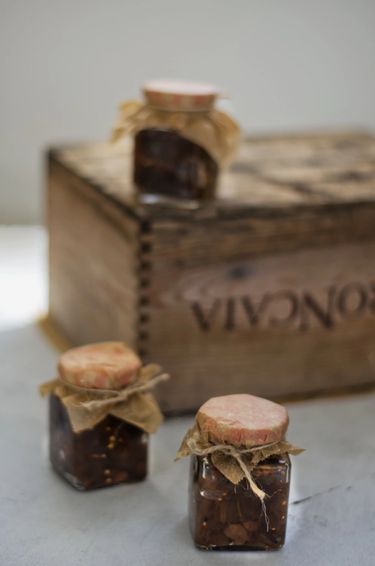
Where does chutney originate from?
I always had the impression that preserves were a British thing. You can only imagine my surprise when I learnt about the true origins of chutney. That's right — India! The word "chutney" derives from Hindi and Urdu chaṭnī, deriving from chāṭnā meaning "to lick" or "to eat with appetite".
Yet Indian chutneys are so wildly different to what I have ever tasted. These chutneys are powdered or pasty, rather than jammy and dense. They are not only made from fruits and vegetables but also ground grains and herbs. The variation of spices used also plays a big role in determining their sweetness, spiciness and tanginess.
So how did chutney transform across time?
Chutney came to exist as a result of the age-old adage of preservation. In the early 17th century, the expanded presence of the British on the Indian subcontinent continued to preserve foodstuffs such as lime pickles, chutneys and marmalades, which were eventually created for Western tastes to be shipped to Europe, as well as colonies like Australia and North America.
Malta being a former colony of the British was no exception. We often find preserves on our breakfast table, accompanied by a cuppa of builder’s tea. And for those looking for local flavours, delicious local chutneys using seasonal produce like the prickly pear fruit or bambinella (a local variety of fruit that is a cross between a pear and an apple) are a real treat.
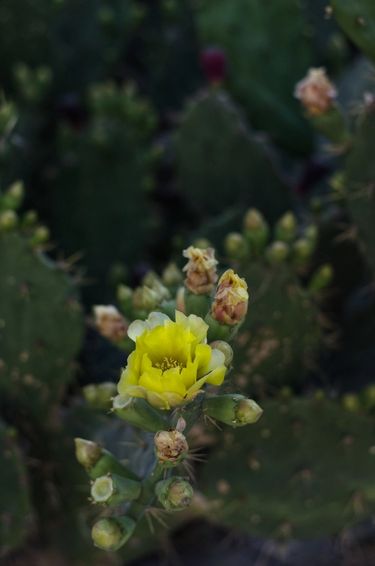
This got me thinking. Sure, I've had my fair share of chutneys but why not make my own.
I peeked into my fridge's drawer to see what I could transform, but I only found a couple of aubergines.
I hesitated. I had never come across aubergine chutney and thought it a strange idea. But, I'm not one to back down so quickly. I searched the web, and there it was — brinjal (aubergine) chutney, an Indian aubergine relish.
I knew what I had to do.
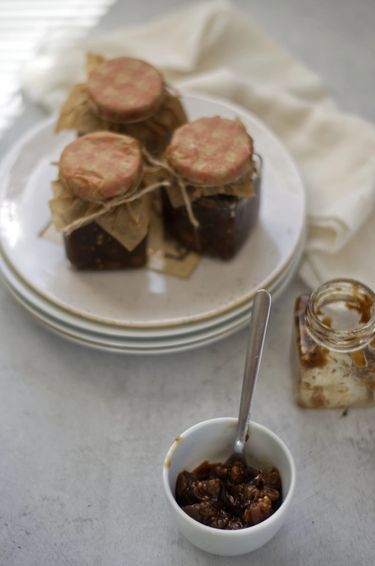
How do you make chutney?
Chutney can be made with a few kitchen pantry ingredients. If you have any of these at home, you can begin experimenting right away.
- Seasonal fruit or vegetables — such as pears, apples, rhubarbs, aubergines etc.
- Vinegar — typically you would use white vinegar/distilled vinegar or apple cider vinegar
- Sugar — this can be brown (muscovado) for caramel tones or white granulated sugar
- Dried fruit — typically these would be raisins, currants or sultanas
- Dried and powdered spices — these can vary from cumin and fenugreek to nigella seeds and paprika
- Fresh spices — you could grate root ginger for some zing.
You can also add other fresh ingredients like mint and chillies, onion, garlic and tomato and many more.
The beauty of chutney is that you can customise it to your taste.
Once you've got all your ingredients, all you'll need to do is add these to one pot and set a couple of timers (for stirring). A slow gentle heat will allow all the flavours to mingle, whilst gradually caramelising the fruit or vegetable that is being preserved.
Chutney is distinctive from relishes in its end result. With chutney, you are looking for a jammy texture, which is not vinegary in flavour, as the vinegar should evaporate during the cooking process. On the other hand, relishes are cooked for less time, resulting in tougher pieces (depending on the fruit or vegetables used), a thinner consistency and stronger taste of vinegar.
How is chutney eaten?
Western-style chutney is typically eaten with cold meat cuts and cheese. In South India, it is typically eaten with rice cakes called idlis and rice pancakes called dosas, amongst other things. In other parts of Asia, chutneys like mango chutney would accompany grilled meat, for instance.
How to make aubergine chutney
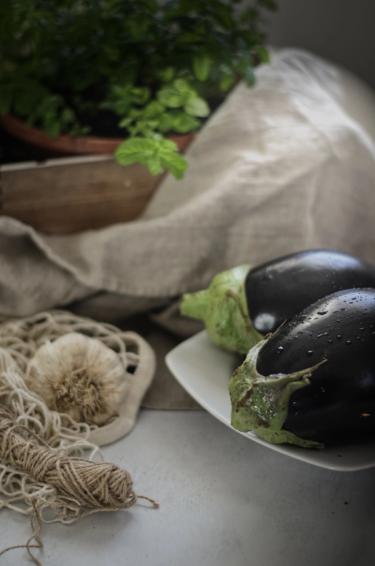
I also use the Italian variety of aubergines as these are most commonly found here. For more information on the different aubergine varieties, check out my blog post Vegan Miso-Aubergine with Walnut Dukkah.
This aubergine chutney is different from India's brinjal chutney or Indian aubergine relish, which uses ingredients that may be hard such as urad dhal (black gram) and asafoetida (hing). For this recipe, you will need the following ingredients:
- For acidity: the apple cider vinegar, tomato paste and red onion
- For sweetness: the muscovado sugar and sultanas
- For heat: chilli flakes but you can also substitute with fresh chillies.
As for spices, I use mustard seeds, cumin seeds and nigella seeds (to give a distinct oniony flavour). I also added fresh garlic and ginger for aroma, warmth and depth of flavour.
A good chutney is all about balance.
A good chutney is all about balance, so while the measurements that I have outlined would give you a delicious end product, I strongly urge you to taste along the way and make adjustments.
This aubergine chutney can be left to mature in flavour for a month in a cool place before using and if preserved in the right manner, will last up to a year. Preserve the chutney in sterilised jars with non-metallic lids and make sure there are no air gaps. Don't forget to seal and label the bottle.
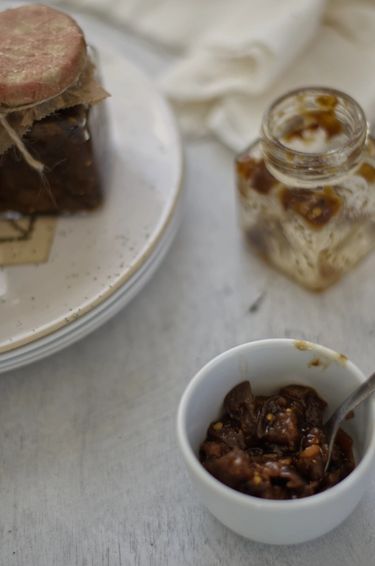
Mediterranean Aubergine Chutney
No reviews yet
Description
An easy and delicious aubergine preserve
Information
- Servings
- 3300ml jars
- Preparation time
- 60minutes
- Cooking time
- 45minutes
Ingredients
- 500graubergines, cubed
- 1medium red onion; finely chopped
- 15gr tomato paste
- 200mlapple cider vinegar
- 200grmuscovado sugar
- 50grsultanas
- 1garlic clove, crushed
- 2grchilli flakes (1/2 tsp)
- 2grmustard seeds (1/2 tsp)
- 2grcumin seeds (1/2 tsp)
- 4grnigella seeds (1 tsp)
- 15grfresh ginger, peeled and grated
- 17grsalt (1 tbsp)
Method
1. Prepare the ingredients
Dice the aubergines, finely chop the onion and garlic and grate the ginger. Prepare a heavy-bottomed pan with a drizzle of olive oil and wait for the pan to get hot.
2. Cook the chutney
Once the oil in the pot is hot, add the diced aubergines together with the onions and garlic. Add the tomato paste and stir for a minute or two, then add the vinegar and sugar; mix and then add the sultanas, ginger and, spices. Cook on medium heat and stir until the sugar has almost dissolved.
Turn the heat up and bring to a boil, then reduce the heat to the lowest possible, cover the pan and simmer gently for 30 minutes. Remove the lid of the pan and continue to cook on low heat, stirring occasionally so that the mixture does not burn or stick to the bottom of the pan. The chutney is ready when it has turned thick and sticky. Remember to taste to make sure that the vinegar has been absorbed well or it will taste acidic.
3. Prepare the sterilised jars
Preheat the oven to 160°C. If you are using jars with rubber seals, be sure to remove these. Wash the jars and lids in hot soapy water. After that, rinse but don’t dry them. Place the jars onto a baking tray and into the oven for 10 minutes. Soak the lids in boiling water for a few minutes. Once the chutney has cooled, ladle into sterilised jars with tight lids. It is necessary that both the chutney and the jars are at the same temperature so that the jars don’t crack.
Note: Refrigerate after opening. It should be OK for 4-6 weeks.
